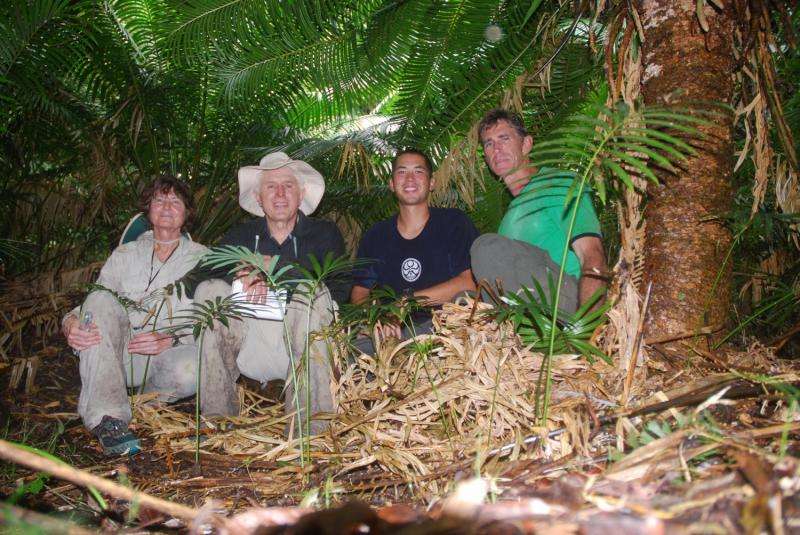Team improves understanding of Guam plant's pollination syndrome

The University of Guam has continued to expand the foundation of knowledge on the reproductive biology of native tree species with a new publication in the July issue of the national science journal HortScience.
The research was conducted within the Western Pacific Tropical Research Center at the University of Guam, and experimentally determined the settling velocity of pollen from several native tree species. "Our primary model species was fadang, a native tree that belongs to a unique group of plants that produce pollen and seeds even though they do not produce flowers," said Dr. Irene Terry. Botanists call the plant Cycas micronesica. The research team has employed a diversity of experimental approaches in recent years to better understand how fadang trees reproduce. "Adding the pollen settling velocity approach to our suite of experiments allowed us to determine the theoretical distances of wind-borne pollen movement," said Terry.
The publishing team consisted of entomologist Terry, graduate student Trent Hamada, engineer Robert Roemer, and ecologist Thomas Marler. The research was a portion of Hamada's thesis as a student in the University of Guam's Environmental Science Program.
The experimental approach used a unique glass tube constructed within a laboratory setting with stable temperature, humidity, and barometric pressure. Controlling the light environment during the terminal velocity tests enabled the direct observance of how quickly the pollen particles settled through a one meter vertical distance in the absence of convection. The extensive laboratory results were thereafter subjected to models to determine a theoretical distance that the pollen could drift laterally in Guam's trade winds. "We employed this approach as a bridge among biology, ecology, and engineering disciplines to better understand the role of wind in facilitating reproduction of this important native tree," said Terry.
The results revealed that a fadang pollen grain could travel more than 500 meters laterally before dropping one meter in elevation. The potential for wind to transfer pollen between plants separated by substantial distances was confirmed. The team selected the HortScience journal for dissemination of this unique Guam-based research because of its national exposure.
Journal information: HortScience
Provided by University of Guam





















